The No. 2 Construction Battalion, CEF
- Home
- World War I Articles
- The No. 2 Construction Battalion, CEF
On 5 July 1916, the No. 2 Construction Company of the Canadian Expeditionary Force was formed. It was unique in Canadian military history as the first battalion composed of black soldiers. Raised in Nova Scotia (where the majority of black Canadians lived), the battalion was initially headquartered in Pictou, N.S., then moved to Truro, N.S. before embarking to England in March 1917.
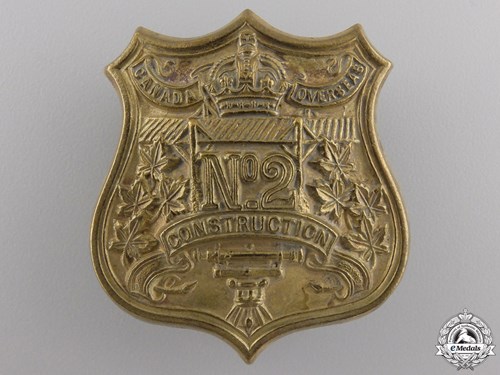
Above: the cap badge of the battalion
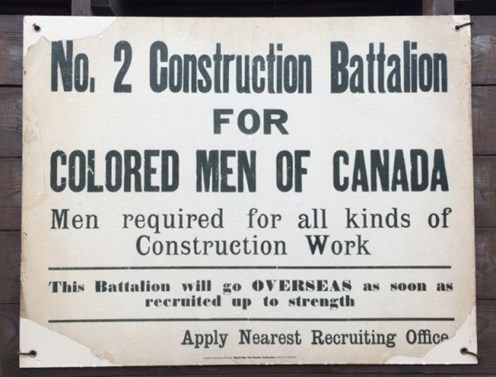
Above: a recruitment poster for the battalion
The formation of the battalion followed protests and representations from black Canadians who were angered at the response to their attempts to enlist in the C.E.F. – the vast majority of those volunteering had been turned away by recruiting officers.
The Commanding Officer was Lt. Col. Daniel Hugh Sutherland. A railway contractor, he was born in Nova Scotia and enlisted in April 1916 as a Private. On 6 July 1916, he was discharged and appointed commanding officer of the new No. 2 Construction Battalion.
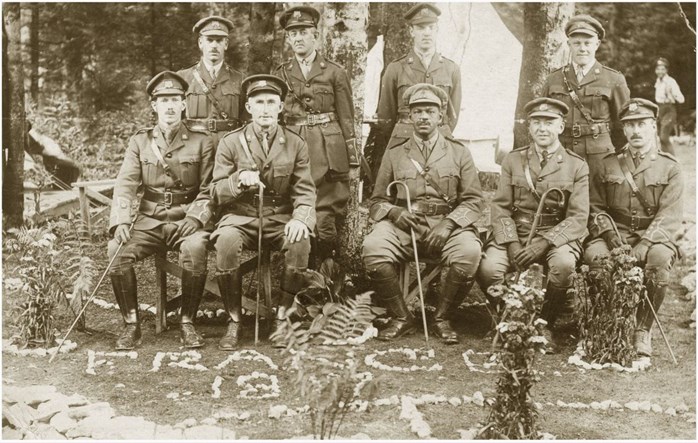
Above: the officers of the No. 2 Construction Battalion, pictured in 1917. The commanding officer, Lieut.-Col. Daniel Sutherland, is seated on the left of the front row, while the unit chaplain, Honorary Capt. William Andrew White, is front row centre.(Photo: thecanadianencyclopedia.ca)
All of the officers in the battalion were white, with the sole exception of the Chaplain, William Andrew White. He was given the rank of Honorary Captain, making him the only black officer in the C.E.F.. He was born in Virginia, USA, the son of formerly enslaved parents and came to Canada in 1900 to study religion at Acadia University, near Halifax, Nova Scotia. By 1905, he was the Minister of Zion Baptist Church in Truro, Nova Scotia.
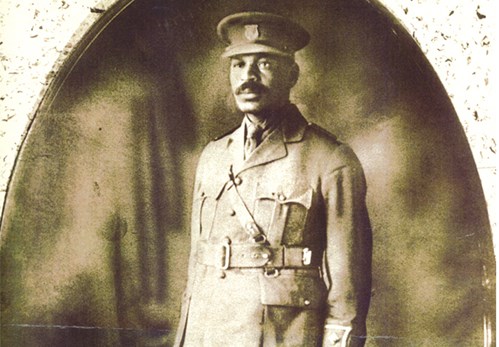
Above: the Reverend William Andrew White, Chaplain. At the end of December 1917, he transferred to Alencon with a draft of men from No. 2 Construction Company but returned to Jura in February 1918. Photo – Canadian Encyclopedia
The men of the battalion were predominantly black Canadians, but there were also men from USA and the British West Indies. The first recruit on 19 July 1916 was Gilbert Richard Lattimore, with the service number 931001. Born in 1879, he had worked as a cook prior to his enlistment at Halifax, Nova Scotia. By August 1916, there were 109 recruits to the battalion. Recruitment was extended to the USA but even so, several months after its creation, the battalion remained under strength.
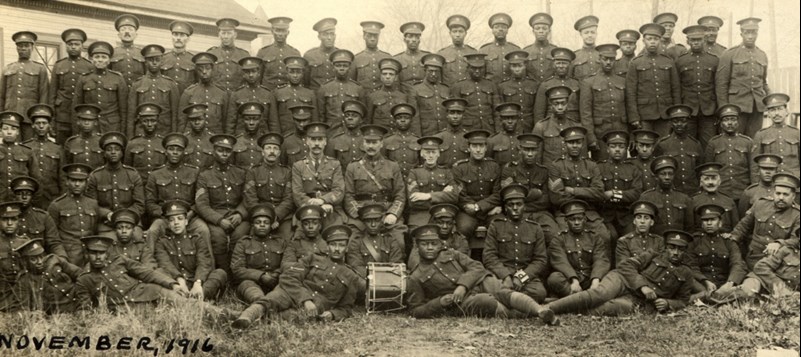
Above: No. 2 Construction Battalion pictured in November 1916. Photo -(courtesy Museum Windsor/P6110, via TheCanadianEncyclopedia.ca).
It left Canada on 17 March 1917 on S.S. Southland, with a complement of 19 officers and 605 other ranks, arriving in Liverpool on 7 April 1917.

Above: S.S. Southland
Lance Corporal George Deane Brown, a carpenter from Barbados, died onboard the Southland on 7 April 1917 from acute bronchitis. Just a few days later, Reuben Smith from Weymouth, N.S. died of pneumonia in hospital in Liverpool. Both are buried in Kirkdale Cemetery in Liverpool.
The battalion then moved to Seaford where it remained until mid-May 1917 with the unit war diary indicating that during this time ‘military training was subordinated to agricultural work, mostly planting potatoes’. A further death occurred whilst at Seaford when Private Aubrey Mitchell, from St. Vincent, West Indies, contracted pneumonia. He is buried in Seaford Cemetery.
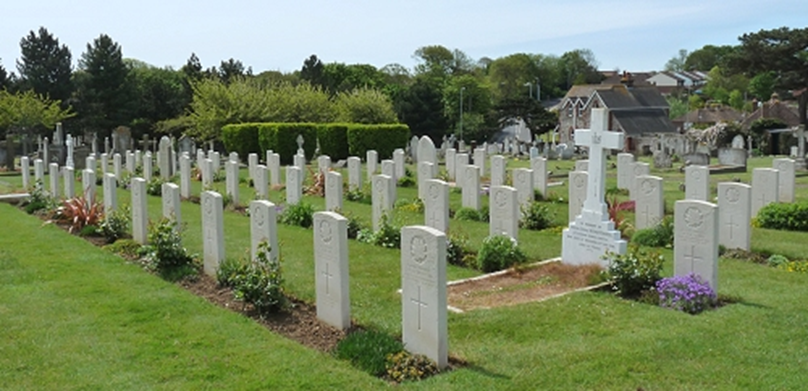
Above: Seaford Cemetery. Photo – Seaford Town Council
The battalion was however seriously under strength, and therefore was reconstituted as, and renamed, No. 2 Construction Company. After a few weeks at Seaford, and with a complement of 9 officers and 495 men,it left Folkestone for Boulogne on 17 May 1917, to be attached to the 5th Canadian Forestry Corps, based in the Jura region in France.
The need for timber from France reflected the drastic reduction in British timber imports necessitated by the need to utilise shipping for the transportation of other goods. With the work of the Canadian Forestry Corps in France, the import of timber from Britain almost ceased. No.2 Construction Company was primarily involved in felling trees, cutting logs, transporting timber to the mill and carrying out millwork but they were also involved in work to provide water supplies and road maintenance and in building and operating a railroad through the forest – often in harsh conditions.
The company arrived at La Joux, Jura on 20 May 1917 but within a day was placed in quarantine due to a suspected case of measles. Work continued during this period with the unit diary indicating ‘All our available men are now detailed in small parties to assist in all branches of the work here’.
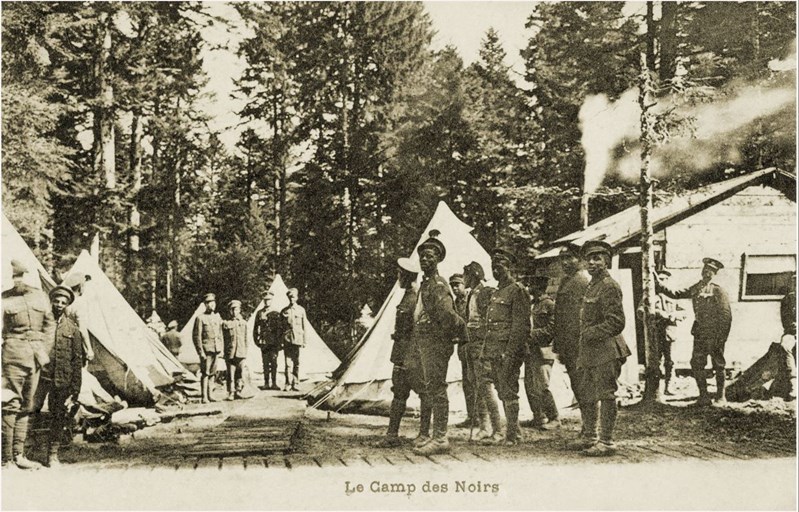
Above: the camp at La Joux. Photo – Canadian Encyclopedia
In December 1917, the unit war diary recorded ‘great anxiety in the unit for the safety of families in Halifax as the scale of the disaster there become known’. This referred to the devastating explosion in Halifax on 6 December 1917, the first news of which appeared to have reached Jura just two days later. Nonetheless, the war diary records that the unit enjoyed a turkey dinner on Christmas Day 1917 but does mention some disappointment that the plum puddings failed to arrive in time.
By the end of December 1917 some 180 men and 3 officers (including the Chaplain, Andrew White) were transferred to Alencon - the reason stated the ‘climatic conditions are too severe for the coloured men‘. The diary also notes that the standard of accommodation provided for this transfer did not ‘correspond’ with the reasons stated for their transfer, as the transportation was open box cars. A further detachment of men from the Company had also been attached to the Canadian Forestry Corps at Cartigny, leaving 8 officers and 257 men at La Joux. During 1918, around 150 Russians would also be employed on similar work, under the supervision of the No. 2 Construction Company, although the war diary commented that some were ‘absolutely useless’ and were transferred to Reims.Of those found unfit, the war diary complained ‘they not only stay in camp idle all day but spread socialistic doctrine among the others so that it is frequently difficult to get them out to work..’. A later complaint referred to the Russians selling cigarettes to the French, necessitating a limit being placed on the daily amount of cigarettes that Russians could purchase from the canteen.
A typical day was described in the war diary thus:
5.00am Reveille
5.30am Breakfast
6.40am Parade forms up and working parties move off in sufficient time to reach various places of employment at 7.00am.
Noon Dinner. Parties near the camp return for dinner. Balance of dinners sent out to work by G.S. wagon.
12.45pm Fall in. Afternoon work starts at 1.00pm and continues to 6.00pm.
6.00pm Supper
6.30pm O.C.’s Orders
9.00pm First Post
9.30om Last Post. Weekly on Monday an inspection by the M.O. of cleanliness of men and barracks.
9.45pm Lights out.
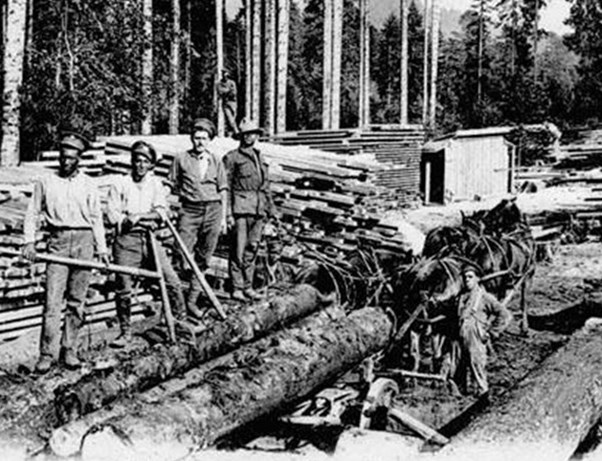
Above: Canadian Forestry Corps, Timber Yard, France c. 1918 (Credit: Canada DND/ LAC M# 3523256).
Sunday was a day of rest for the Company, with men able to visit nearby villages. The Company also had a band which entertained the men at the Cinema and at the celebration of Dominion Day on 1 July and other events.
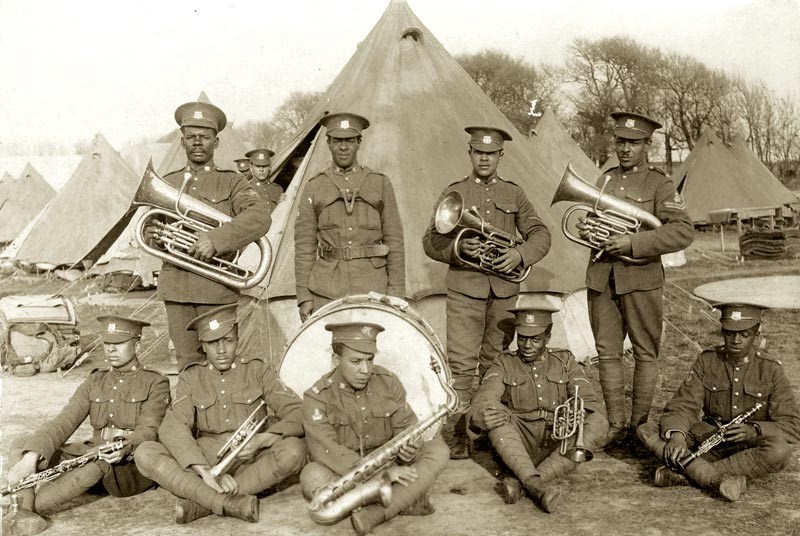
Above: The band of No. 2 Construction Company. It was originally formed to assist in recruitment at churches and rallies. Photo –Legionmagazine.com
On 3 April 1918, a request was made to seek the transfer of the Company to the western front, following the German offensive. In anticipation of a positive response, military training was commenced. However, by the end of April the answer received was that ‘it is not considered expedient to detach the company’.
Most of the deaths in France within No. 2 Construction Company resulted from illness. The first of these occurred on 4 July 1917, when Private Charles Henry Bryant from Hamilton, Ontario died of meningitis. He is buried in Supt Churchyard. Private W. Boone died a few months later on 1 December 1917 from nephritis and is also buried there.
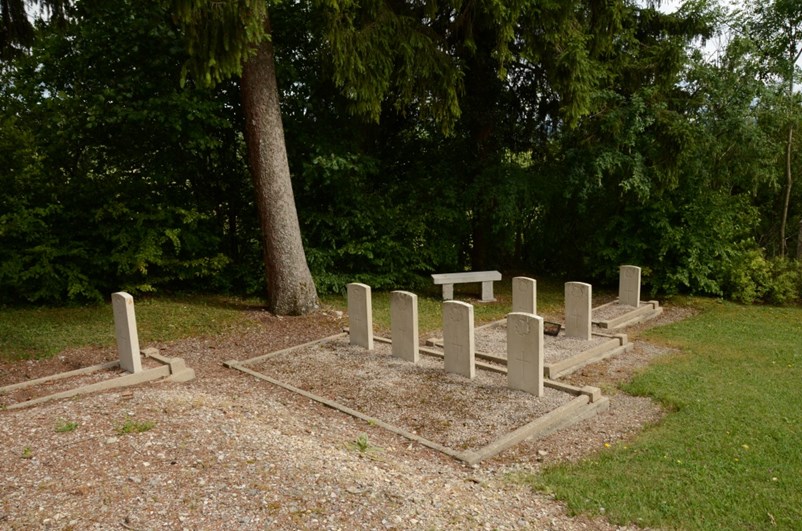
Above: Eight Canadian graves in Supt Churchyard, Jura
Two further burials from the No. 2 Construction Company would take place in Supt Churchyard in 1918. The first of these was Private J. Mansfield in January 1918. The second would take place in September 1918 following the murder of Private Charles Some. His body was found on Road 45 (a narrow mountain road from the main Andelot Road to Salins). Charlie Some was born in Natal, South Africa but emigrated to Nova Scotia before the war, living in Africville, Halifax. Suspicion fell on a French soldier although there is no further mention of the outcome of any court martial within the unit war diary.
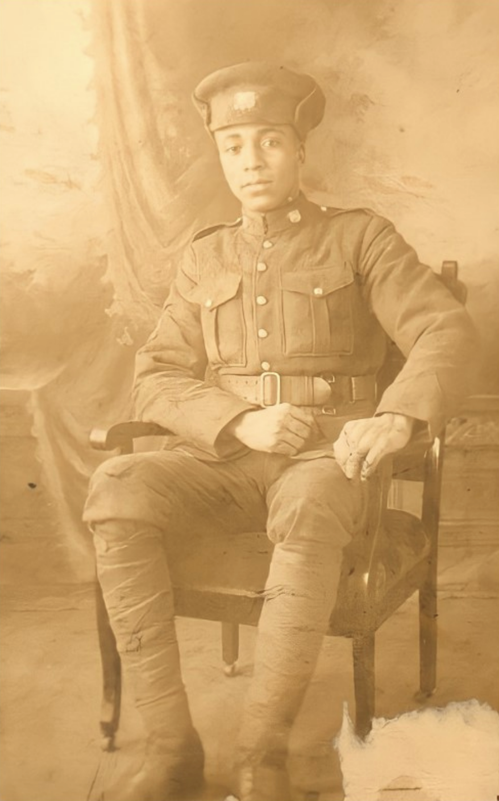
Above: Private John Mansfield, died of illness in January 1918 (c 2023) BVC Black Canadian Veteran Stories
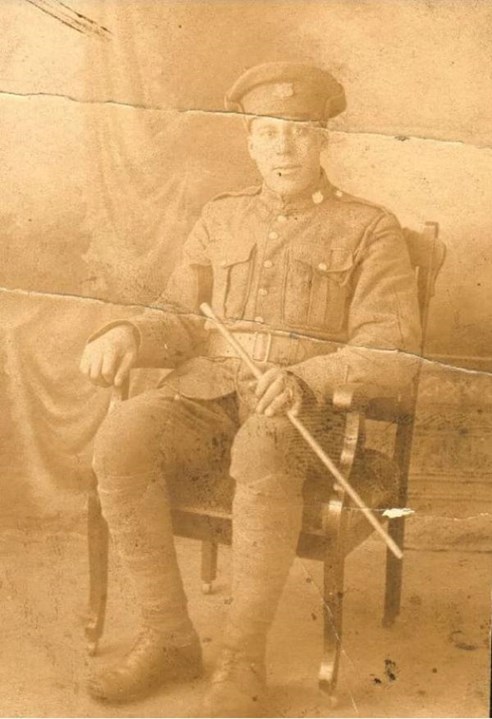
Above: Private Charlie Some, murdered in September 1918. Photo (c 2023) BVC Black Canadian Veteran Stories
Six burials from No.2 Construction Company took place in Champagnole Communal Cemetery during 1918. All the following died of illness and are buried in Champagnole Communal Cemetery.
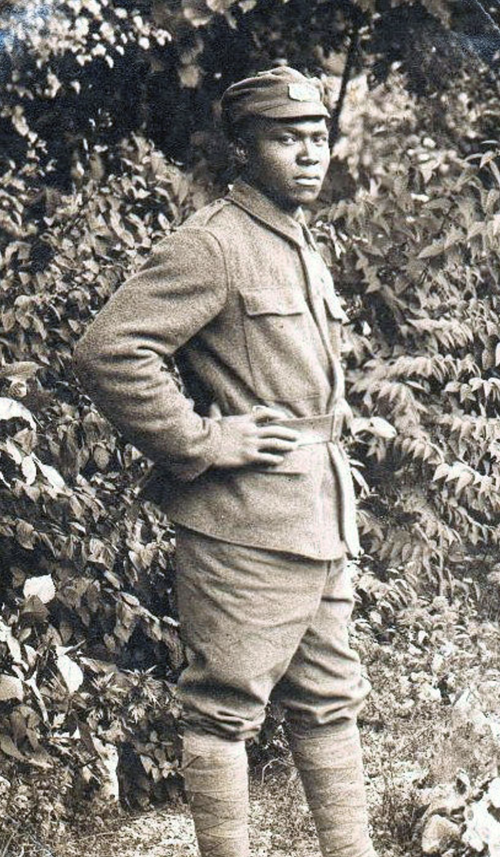
Above: Pte Belfield Elliot Hall of Barbados No 2 Construction BN Courtesy of Anthony Sherwood (C) Veteran Affairs Canada
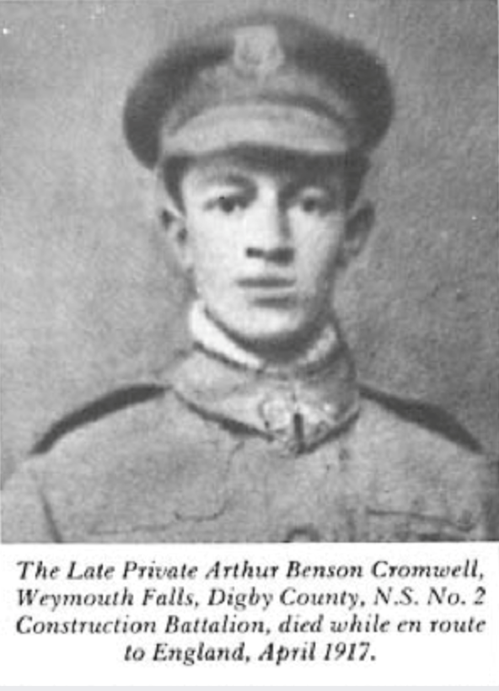
Above: Pte Arthur Cromwell. Newspaper Clipping – Submitted for the project, Operation: Picture Me (C) Veteran Affairs Canada
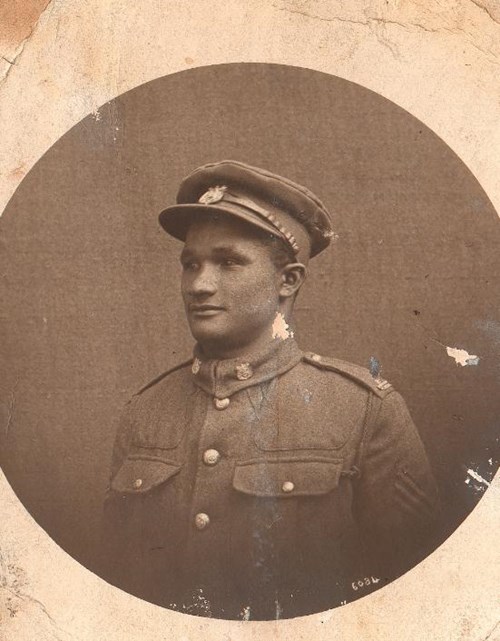
Above: Sgt Sydney David – Photo courtesy of The Legacy Voices Project
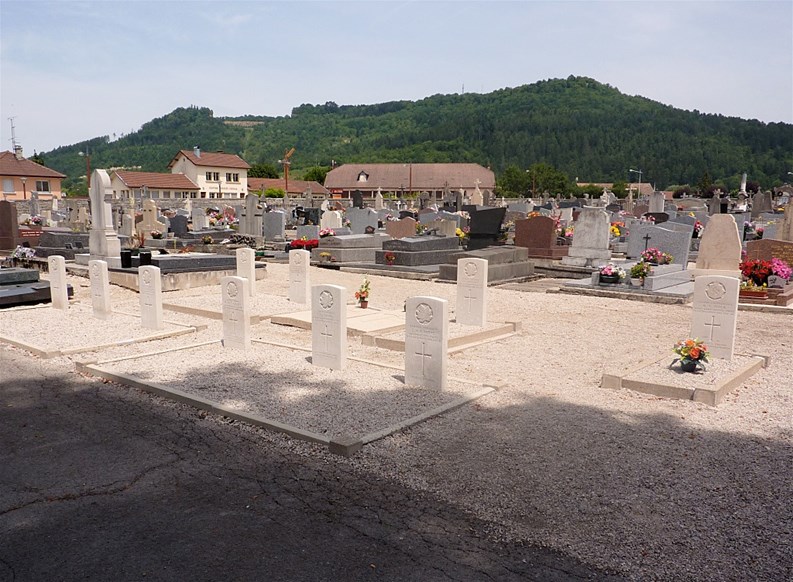
Above: one of three plots of war graves in Champagnole Communal Cemetery. Pictures © Conrad Freeling ww1Cemeteries
One further burial from No. 2 Construction Company took place in Delsaux Farm Cemetery, Beugny in the days following the Armistice. Private Victor Carvery from Africville, Nova Scotia was killed by a comrade on 20 November 1918. He had been transferred to the 37th Company of the Canadian Forestry Corps in November 1917. His assailant was identified as Private Arthur Johnson, later sentenced to 15 years penal servitude.
Many years after the conclusion of the war, Canada would recognise the contribution that its one and only ‘Black Battalion’ made. On 9 July 2022, a National Apology event was held in Truro, Nova Scotia, recognising the prejudices that those serving in the ‘Black Battalion’ had encountered.
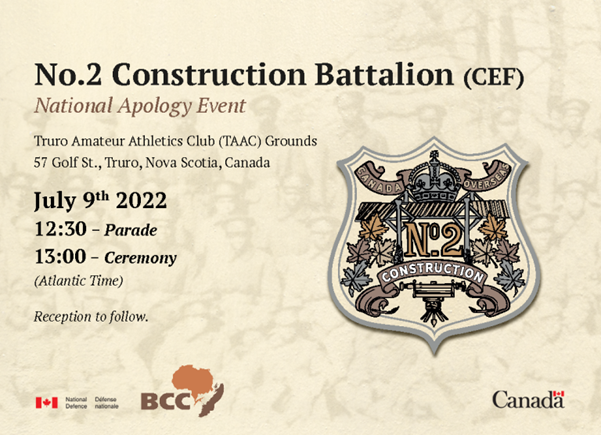
Above: The intimation of National Apology event. Photo - www.no2-cef.ca
A memorial was also erected in Pictou, Nova Scotia.
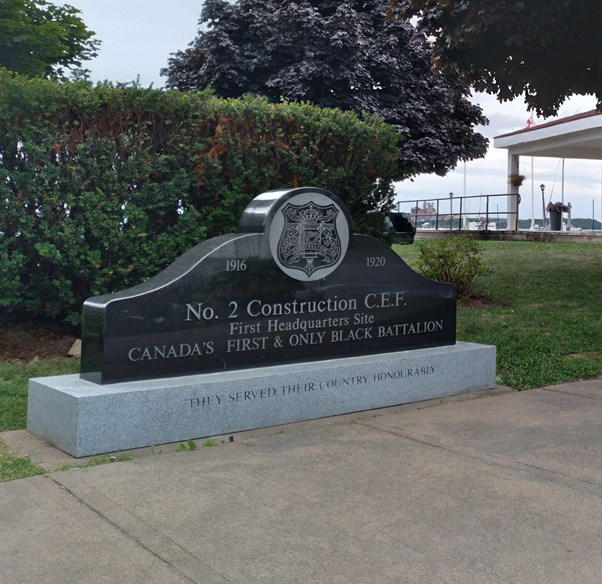
Above: The memorial erected in Pictou, Nova Scotia. Credit: Town of Pictou Veteran Affairs Canada
Article by Jill Stewart
Hon. Sec. The Western Front Association
Further reading
Calvin Ruck, The Black Battalion 1916-1920: Canada’s Best Kept Military Secret (2016) (30th anniversary edition)
Mathias Joost, Canadian Military Journal, “No. 2 Construction Battalion: The Operational History” (Summer 2016)
No.2 Construction Battalion, Valour Canada





